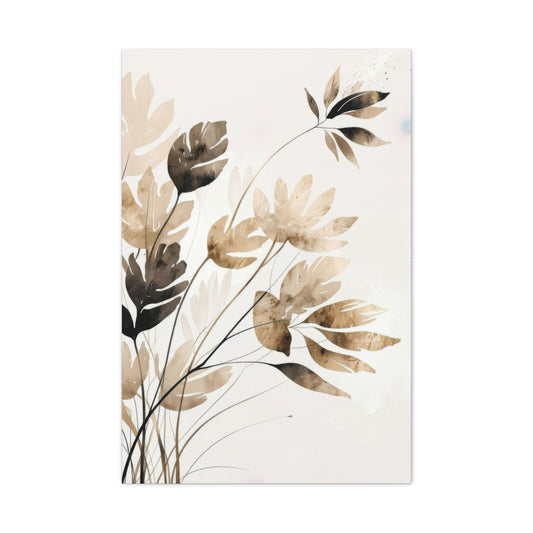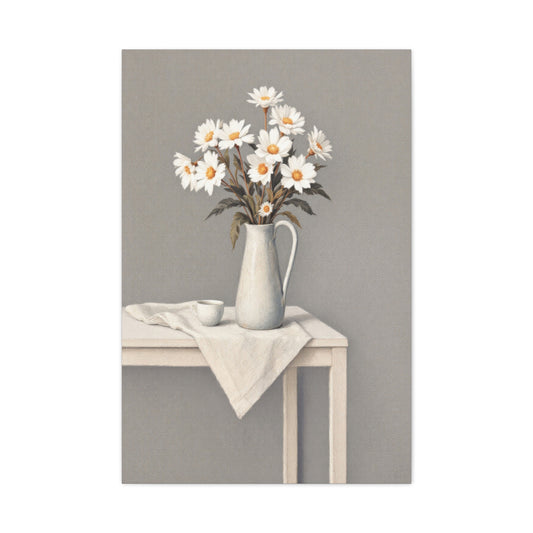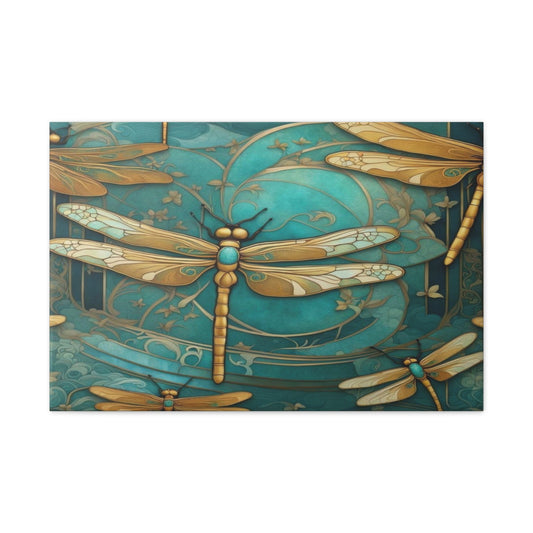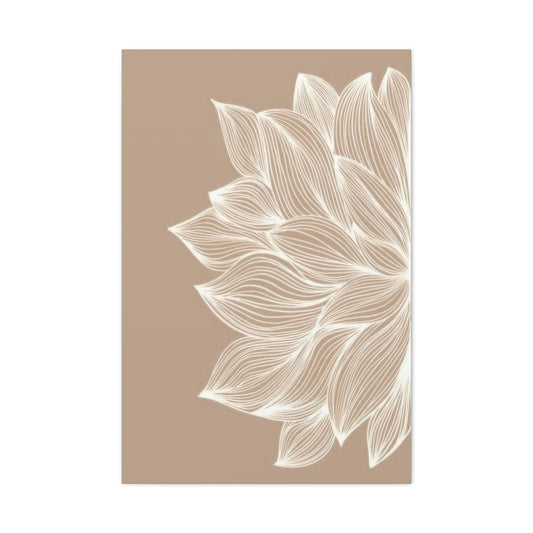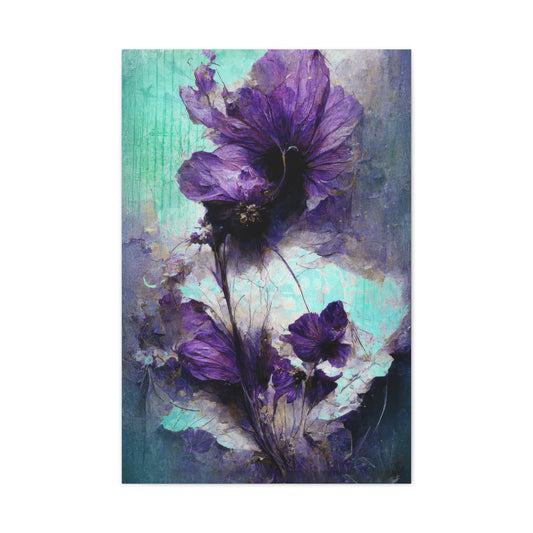The Art of Introspection: Alexandra Gould’s Deeply Human Portraiture
Amidst the rolling hills and meadows of Wiltshire, England, resides Alexandra Gould, a portrait artist whose work resonates with a profound emotional cadence. Her canvases do more than depict faces; they whisper the private thoughts and inner tremors of those who sit before her. Working primarily in acrylics, Gould has honed a visual language that captures the ineffable, delicate dance between external appearance and internal truth.
Wiltshire’s serene and pastoral landscape provides not just a backdrop, but a sort of spiritual ecosystem for Gould’s creativity. The quietude of the countryside seems to seep into her work, allowing for an introspective tone that feels both intimate and expansive. Her subjects, whether captured in solitary contemplation or charged with silent intensity, exist within a layered psychological space. This subtle orchestration of emotional undercurrents distinguishes her from portraitists who merely aim to replicate likeness. For Gould, every portrait is an entry point into a deeper narrative mirror held up not only to the sitter but to the viewer as well.
Her recent participation in the highly regarded Ruth Borchard Prize Exhibition at Piano Nobile, Kings Place, marked a pivotal moment in her evolving career. The exhibition, which champions the self-portrait as a vessel of self-examination and authenticity, aligns naturally with Gould’s mission. Her inclusion is not just a nod to technical proficiency; it is an affirmation of her ability to capture the invisible strands of identity and emotion. Each portrait she creates is a conversation suspended in painta moment frozen, but rich with internal motion.
What sets Gould apart is her devotion to nuance. She does not chase spectacle or overt symbolism. Instead, her work unfolds gradually, revealing its complexities over time. Viewers are invited not to glance, but to gaze, to spend time in communion with the subject, whose expression might at first seem reserved but eventually reveals oceans of unspoken sentiment. Her art dares you to listen with your eyes, to perceive the rhythm of a soul through the subtlest of gestures.
Light, Texture, and the Semiotics of Pattern
One of the most compelling elements of Alexandra Gould’s portraiture is her masterful use of light and texture to evoke atmosphere and emotional resonance. Her brushwork, often subtle and deliberate, captures more than the contours of a faceit interprets the inner climate of a person. Skin, in her hands, becomes more than flesh. It is terraintextured, luminous, vulnerable. The play of light and shadow across a cheekbone or brow becomes a metaphor for revelation and concealment, suggesting that what is most real about a person is not always readily visible.
Rather than opting for clinical precision, Gould imbues her surfaces with a tactile sensibility that echoes the physicality of human emotion. Texture is deployed with psychological intent, creating a visual rhythm that pulses beneath the stillness of her compositions. Even in quiet moments, her subjects seem alive with the tension of memory, introspection, and unspoken thoughts.
Another hallmark of her work is her integration of pattern and fabric, which she uses not merely as decorative flourishes but as symbolic frameworks. These motifsfloral, geometric, or culturally specific, as visual anchors. They connect the subject to a broader aesthetic and historical context, enriching the narrative without overwhelming it. Often, these patterns serve as subtle nods to heritage, personal history, or inner identity, drawing the viewer deeper into the narrative fabric of the portrait.
Her use of ornamentationwhether through richly detailed garments or intricately composed backgroundsfunctions as a kind of visual storytelling. Far from being superfluous, these elements encourage viewers to consider the interplay between identity and environment. Every fold of fabric, every intricate design, tells a story that complements and complicates the face it surrounds. This confluence of detail encourages a slow viewing, a meditative engagement that rewards those who take the time to truly look.
In Gould’s paintings, even silence is composed. She creates atmospheres so immersive that they border on cinematic, yet there is nothing theatrical about her work. Her palette, restrained yet expressive, supports this ambiance. Through color and composition, she creates a sense of space where both sitter and viewer can reflect, suspend judgment, and simply be. This makes her paintings not just portraits, but experience portals into another’s inner world.
A Sanctuary of Process and the Cultivation of Character
Alexandra Gould’s studio is less a workplace and more a chamber of alchemy. Situated within the gentle countryside of Wiltshire, it reflects the quiet intensity of her practice. The room is filled with objects both utilitarian and mysteriousswatches of antique cloth, printed ephemera, timeworn books on classical portraiture, and personal talismans that hint at the intimacy of her creative process. Here, the act of painting becomes almost ritualistic.
This is not the domain of hurried productivity. Instead, Gould approaches her art with the discipline of a monastic scribe, brushstroke carefully considered, each layer of paint the result of patient study. The studio hums with a stillness that feels sacred, a place where distraction is shut out and focus becomes a form of devotion. The space, curated as thoughtfully as her compositions, reflects her belief in the value of time, of allowing subjects to unfold slowly, organically.
Gould’s practice involves more than just the technical aspects of portraiture. She is a seeker, interested in the philosophies of representation and the ethics of capturing another’s image. Her portraits often emerge from extended conversations, repeated sittings, and moments of shared silence. This process of relational building ensures that the final piece is not a projection, but a co-creationan image that resonates with the truth of the sitter and the vision of the artist.
The relationship between artist and subject is integral to the alchemy of her work. Trust is essential, as is mutual curiosity. Her sitters are not mere models; they are collaborators in the excavation of identity. This dynamic adds a layer of emotional authenticity that cannot be faked or replicated through photographic reference alone. The result is a body of work that feels alive, filled with voices that, though silent, speak volumes.
In an art world increasingly dominated by digital immediacy and conceptual abstraction, Alexandra Gould offers a counterpoint that is both timeless and timely. She reminds us of the enduring power of the painted face, not as a static image, but as a dynamic site of memory, meaning, and connection. Through her meticulous process, empathetic eye, and lyrical use of material, she crafts portraits that linger in the mind long after the first glance.
Her work challenges us to consider what it means to truly see another person. In every painting, there’s a quiet invitation: to slow down, to look again, and to encounter the layered humanity that lies just beneath the surface.
The Intimate Dialogue Between Artist and Medium
In the ever-evolving conversation between artist and material, few relationships feel as symbiotic as that of painter and paint. For portrait artist Gould, acrylics are more than a toolthey are a creative partner, responsive and pliant in a way that supports her need for immediacy and emotion. She often likens working with acrylics to a dialogue rather than a process. Unlike oils, which can linger on the surface with a languid drying time, or watercolors, which demand surrender to fluid unpredictability, acrylics offer Gould a dynamic in-between: adaptable, fast-drying, and richly layered.
This quick responsiveness is crucial to the emotional intensity she cultivates in her portraits. The swift drying time allows her to build layers incrementally, crafting surfaces that resonate with the subtle complexities of human flesh, fabric, and psyche. It’s a tactile experience just for the viewer, but for Gould herself. The physical act of painting becomes a sensory exploration, where the pressure of a brush or the drag of a palette knife isn’t just a technical maneuver but an extension of feeling. The result is work that invites not only the gaze but a deeper kind of seeing, one that feels through the layers rather than just looking at them.
Her approach to materials underscores a larger thematic impulse in her work: intimacy. Every mark on the canvas feels considered, but not overly calculated. There’s a looseness in her handling that resists perfectionism, allowing room for the natural ebb and flow of human expression. Even her use of unconventional toolsscraps of fabric, sponges, palette knivesspeaks to this instinct to disrupt, to resist polish in favor of texture. These marks aren't just visual details; they act as emotional fissures, tiny ruptures in the surface where the inner life of her subject begins to flicker through.
This physicality of paint becomes metaphor. Just as her acrylics allow her to sculpt flesh and form, they also offer a kind of emotional architecture. The layered surface mimics the layered self. In this way, her portraits do not merely depict likenessesthey embody them, presenting the sitter not as a static subject but as a presence unfolding.
Staging Light: Crafting Atmosphere Through Illumination
Lighting in portraiture has always carried symbolic weight from the divine spotlight of Renaissance saints to the moody interiors of Dutch masters. For Gould, light is not a backdrop; it is a co-author of narrative and mood. She doesn't wait for the perfect natural illumination. Instead, she orchestrates it. Her studio becomes a stage where artificial lighting is choreographed with intention, casting highlights and shadows that shape not just the subject but the psychological tone of the piece.
Her use of chiaroscuro, while reminiscent of Caravaggio's dramatic interplay of light and dark, is never derivative. It feels contemporary, not through aesthetic tricks but through emotional nuance. The darkness doesn’t merely conceal; it provokes. The light doesn't just reveal; it interrogates. These lighting choices suggest more than atmospherethey imply inner life, hinting at a world behind the eyes of her subjects, a space between what is seen and what is sensed.
This manipulation of illumination serves a deeper purpose. It creates tension. Each portrait becomes a scene unfolding within that tension, a quiet drama heightened by the stark push and pull of luminance. This sense of theatricality doesn’t diminish the realism of her portraitsit amplifies their gravity. Faces become topographies of memory and mood, sculpted by the angles of light, while bodies sink into the shadows as if retreating into their thoughts.
The lighting becomes psychological. It allows Gould to elevate her subjects beyond the static moment. Whether it’s the soft diffusion across a cheekbone or a hard-edged shadow carving a jawline, each lighting decision becomes a brushstroke of feeling. There’s a reverence here, not for light itself, but for what it can suggest. In the glow and gloom, viewers are invited not just to see a face, but to feel the emotional current running beneath it.
This carefully orchestrated illumination works in concert with her other techniques. It heightens the texture she builds with layered acrylics, deepens the shadows caught in fabric folds, and sharpens the emotional tension captured in an eye’s glance or a slightly parted mouth. Light becomes the final actor in her silent theater, articulating what the subject cannot say aloud.
Revealing the Self: The Portrait as Psychological Mirror
What sets Gould’s portraiture apart is her unwavering commitment to presence not just in the subject, but in the process. She resists the conventional notion of posing, where a sitter is asked to perform a version of themselves. Instead, she fosters conditions where authenticity can surface naturally. Often, she begins sessions with extended conversations or simply sits in silence, allowing the subject’s real demeanor to rise once the initial self-consciousness has faded.
The resulting images are less about likeness and more about essence. Her sitters aren’t captured; they are uncovered. Each painting becomes a psychological mirror rather than a static rendering. The emotional core of the portrait emerges not from a single expression but from the accumulated gestures, textures, and light over time. This process can take days, sometimes weeks. Multiple studies are often created, as Gould homes in on the most resonant articulation of presence. What she seeks is not perfection, but truth.
Her brushwork plays a key role in preserving this emotional fidelity. Even in the most meticulous compositions, there is a vitality in her strokes that resists rigidity. The paint breathes. It pulses with life. And through this, the sitter begins to feel less like a subject and more like a participant in a shared emotional exchange. The texturerough in places, smooth in othersmirrors the jaggedness of real inner life. It speaks to moments of calm, of tension, of vulnerability, all suspended within the frame.
Gould’s artistry lies not in dominating the canvas, but in letting it speak. She refrains from imposing fixed narratives on her subjects. Instead, she creates a liminal space where ambiguity is not just tolerated but embraced. Identity becomes fluid, not pinned down by biography or backstory. Her portraits suggest that who we are can never be fully captured in a single moment, but must be approached through empathy, time, and open observation.
This balancebetween closeness and detachment, spontaneity and structure, narrative and opennessis what lends her work its remarkable power. There’s a deep respect here for the humanity of the sitter. The paintings do not seek to explain or categorize, but to hold space. They are invitations to pause, to look, and to feel something realperhaps even about ourselves.
In a digital age saturated with image and spectacle, Gould’s portraits serve as quiet counterpoints. They remind us that true seeing is a slow art. That emotional truth isn’t loud, but layered. And that the soul of portraiture lies not in replication, but in revelation.
The Language of Pattern: Beyond Surface to Self
In contemporary portraiture, where realism and abstraction continuously redefine the boundaries of representation, the work of Gould stands apart through her nuanced use of pattern and texture. These elements are not mere visual embellishments act as powerful extensions of identity, embodying the inner world of her subjects. What might at first appear as ornamental choices quickly reveal themselves as intricate storytelling devices. Gould’s portraits offer more than visual likeness; they serve as layered narratives in which every line, hue, and motif contributes to a deeper understanding of the sitter.
The fabrics, wallpapers, and objects Gould integrates into her paintings often resonate with specific emotional or biographical weight. A patterned shawl may hint at generational memory, while a textured backdrop might conjure childhood spaces or long-forgotten emotional landscapes. These fragments of design serve not only to enrich the composition but also to weave a tapestry of memory and emotion. They encapsulate private stories made visible, transforming the surface into a site of narrative revelation.
Rather than treating the background as passive or merely supportive, Gould allows these elements to interact dynamically with her subjects. Sometimes the patterns seem to rise and ripple, subtly invading the figure’s space as if memories or identities are reclaiming their hold. In other words, the figure stands in quiet contrast against a receding decorative field, signaling resilience, introspection, or distance. This dance between figure and ground suggests that identity is not fixed, but relationalformed and reformed in dialogue with the spaces we inhabit and the histories we carry.
The relationship between sitter and surface becomes even more compelling when one realizes that Gould doesn’t simply paint what she seesshe paints what is felt, remembered, or longed for. This ability to conjure unseen emotional layers is part of what makes her work so resonant. In Gould’s portraits, the external world does not merely frame the subject; it flows through them, tethering them to the past while anchoring them in the present.
Gould’s mastery lies in her capacity to navigate the boundary between personal and collective symbolism. Her patterns do not merely decoratethey decode. They are visual murmurs of culture, gender, heritage, and dreams, layered like sediment across the canvas. Viewers find themselves tracing motifs not only with their eyes but with their memories, subtly drawn into the emotional frequency of the work. There is a quiet power in this interplay of recognition and mystery, where intimacy becomes universal and the unseen is gently summoned into visibility. In this sense, Gould’s art is not simply portraiture, is excavation, revealing the psychological architecture that scaffolds identity. Her use of pattern is not confined to aesthetic strategy; it is a language unto itself, one that whispers, insists, and ultimately transforms the viewer’s understanding of what a portrait can hold.
Texture as Metaphor: A Tactile Vocabulary of Memory
Gould’s engagement with texture extends far beyond the materiality of paint. Her mastery lies in manipulating both physical and visual texture to evoke presence, emotion, and psychological depth. She often builds her surfaces through carefully layered applications of pigment, allowing each brushstroke to retain its voice. The canvas becomes a palimpsest record of gestures that mirrors the layered nature of memory and identity.
She pays close attention to how visually the interplay of light, line, and modulation influences the viewer’s experience. There is a deliberate pacing to how her paintings unfold before the eye. At first glance, a work may seem decorative or stylized, but with sustained looking, subtleties emerge. A barely-there pattern reveals itself. A shift in tone suggests a moment of vulnerability. The process of viewing becomes participatory; the canvas rewards not just observation, but attentiveness.
This commitment to slow, intentional art-making stands in stark contrast to the digitally saturated, speed-driven visual culture of today. Where digital portraits often rely on instant readability and surface perfection, Gould invites the viewer into a different tempo that values depth, time, and human touch. Her paintings do not yield their meaning all at once. Instead, they unfold over time, mirroring the slow process of truly getting to know someone.
There is something tactile about her work, even when the texture is purely visual. The eye begins to feel what the brush has described: frayed edge, a plush velvet, a densely patterned brocade. This sensory immediacy makes her paintings linger in the mind long after one has stepped away from them. It’s as though the viewer has not just seen the subject but touched a piece of their world.
Gould’s use of texture also operates on a metaphorical level. Texture becomes a stand-in for psychological complexity, for the layers we all carry. In her work, the patterned surface is never neutral. It might speak of comfort or containment, of chaos or calm. It reflects the multiplicity of selves we present to the world and those we conceal. In this way, texture becomes a kind of emotional cartography, mapping out interior terrain through the language of line and surface.
In Dialogue with Influence: Reclaiming the Intimate in Contemporary Portraiture
Gould’s portraits do not emerge in a vacuum. Her artistic voice is informed by a rich tapestry of influences, ranging from the expressive realism of Lucian Freud to the ornamental lushness of Gustav Klimt. Yet rather than mimic these artists, Gould reinterprets their legacies through a lens that is deeply personal and contemporary. From Freud, she borrows the unflinching honesty of portrayal, the sense that flesh and feeling are inseparable. From Klimt, she channels the immersive power of pattern and decorative excess. But in Gould’s hands, these influences are not ends in themselves. They are springboards for innovation, refracted through her unique sensibility.
This synthesis of influences reflects Gould’s broader philosophical stance: that art is both a dialogue with tradition and a deeply individual act. Her portraits echo the past while carving space for new modes of seeing and feeling. She honors the painters who came before her by extending their concerns into new realmsusing pattern not just as decoration, but as memory, emotion, identity.
In an age increasingly dominated by digital filters, AI-generated imagery, and algorithmic beauty standards, Gould’s commitment to slow, analog creation feels almost radical. Her portraits are not curated facsimiles of perfection but meditations on authenticity. Each brushstroke is a decision, a moment of engagement with the sitter and the self. She resists the flattening tendencies of contemporary media by insisting on dimensionalityof surface, of feeling, of story.
Equally important is the collaborative nature of her portrait process. Gould doesn’t merely observe her subjects; she engages them in conversation, builds relationships, and allows their personalities and histories to shape the outcome of the work. This collaborative ethos imbues her paintings with vitality. They are not static images but living documents of connection and exchange. The subject is never just a model; they are a co-author of the visual narrative.
Through this intimate and intentional approach, Gould's work transcends the traditional expectations of portraiture. Her paintings become vessels of empathy and reflection, offering viewers a chance to see and feel more deeply. They challenge us to consider how identity is composed not only of faces and features but of stories, textures, and the spaces we inhabit.
In this way, Gould’s work stands as a quiet but powerful counterpoint to a world increasingly obsessed with speed, gloss, and superficiality. She reminds us that art, like people, is most compelling when it invites us to slow down, look closer, and engage with all the richness that lies just beneath the surface.
The Digital Studio: Reimagining the Artist’s Online Presence
In an age where digital experiences increasingly shape how art is consumed, the artist's website has become more than just a digital gallery is a vital extension of the studio itself. For Gould, whose artistic practice is grounded in the physical act of painting and the textures of lived experience, the online realm offers an additional layer to her expression. Her website does not function merely as a passive archive of images; rather, it operates as an immersive studio space, thoughtfully designed to reflect the ethos of her artistic process.
Rejecting the detached minimalism that dominates many contemporary art websites, Gould embraces a more nuanced, narrative approach. Her site is structured to mimic the rhythm and layers of a storybook, where each click guides the visitor deeper into her artistic world. It feels less like browsing and more like walking through a space where every page, image, and word has been placed with intention. This format encourages lingering, inviting viewers to engage not just with the final works but also with the layers of thought, labor, and inspiration that bring them to life.
This digital environment acts as an extension of her studio practice that reflects her patience, her eye for detail, and her quiet insistence on emotional authenticity. The images are rendered in high definition, allowing for a near-tactile appreciation of brushstrokes, color modulations, and surface texture. The hues used on the website interface are carefully calibrated to echo the tones found in her canvases, creating a cohesive sensory experience that bridges the physical and virtual realms.
Gould’s digital space is more than a presentation; it’s an invitation. Visitors are not simply spectators but are drawn into the thoughtful cadence of her artistic journey. It mirrors the meditative tempo of her painting processencouraging slowness, introspection, and emotional resonance in an online world often defined by speed and distraction.
What truly distinguishes Gould's approach is her recognition of the internet not as a sterile repository, but as a living, breathing ecosystem capable of holding memory, emotion, and presence. Her website does not impose a hierarchy of works or enforce a linear viewing path; rather, it gives room for accidental discovery, for the kind of aesthetic serendipity that often sparks deeper engagement. Just as a studio visit reveals sketches, unfinished pieces, and moments of revelation, her site unfolds in layers, allowing the viewer to witness the progression of an idea from inception to execution.
Gould also resists the commodification that often underlies online art spaces. There is a sense that the site is not built to sell, but to share. Its architecture honors curiosity and rewards attentiveness. Time spent exploring it mirrors the artist’s own deliberate paceone that favors resonance over reach, meaning over metrics. In this way, the site becomes an act of resistance against the flattening forces of digital consumption, offering instead a quiet sanctuary for contemplative engagement.
Her choice to include textual reflections, process notes, and contextual fragments adds depth to the visual encounter. These aren’t didactic statements, but intimate glimpses into her thinking, revealing how memory, landscape, and gesture intertwine in her practice. The inclusion of such personal content further erodes the boundary between the artist and the audience, inviting a deeper empathy and connection.
Moreover, the digital studio becomes a space of continuity, an evolving map of her artistic terrain. It archives growth without calcifying it, and honors the unfolding nature of creativity. Rather than presenting a static body of work, Gould’s site suggests that art is always in flux, always becoming. In doing so, it offers a rare kind of honesty about the nature of artistic labor's uncertainties, its repetitions, and its quiet revelations.
Ultimately, the site functions as both mirror and portal: a reflection of Gould’s internal landscape and an opening into a shared imaginative space. In its attentiveness and intentionality, it asserts that the digital need not be disembodied or disconnected from the real. Instead, it can extend the soul of the studio into the hands of the viewer, offering not just images, but a sense of presenceintimate, layered, and deeply human.
Transparency and Process: Opening the Doors to Artistic Intimacy
One of the most compelling aspects of Gould’s online presence is the transparency with which she shares her creative journey. Beyond the polished final works, her website offers access to the scaffolding that underpins her art: preliminary sketches, discarded studies, annotated thoughts, and in-progress snapshots of paintings still taking shape. This openness does not diminish the power of the finished artwork; rather, it enhances it by shedding light on the complexity and persistence that creativity demands.
By allowing access to these formative materials, Gould dismantles the romanticized notion of the artist as a solitary genius delivering perfect works in silence. Instead, she presents a more honest and generous narrative that acknowledges the uncertainty, revision, and discovery that define the creative process. This kind of digital transparency is rare and deeply impactful. It offers aspiring artists, collectors, and casual visitors alike a fuller understanding of how art evolves, layer by layer, from conception to completion.
What’s particularly notable is that this exposure is not curated for spectacle. There is a quiet humility to how Gould presents her processnever overstated, never performative. These behind-the-scenes glimpses serve to deepen the viewer’s appreciation of her technical mastery and conceptual depth. In seeing her working notes or a half-completed study, one begins to understand the emotional and intellectual labor embedded in every brushstroke.
This practice also reframes the role of the website itself. Rather than acting as a static exhibition hall, it becomes a living document and archive in motion. Each visit to the site can reveal something new: a freshly uploaded preparatory drawing, a recently written reflection, or a new piece in progress. The digital space pulses with the same vitality as her studio, underscoring the idea that art is not just a product but an ongoing practice.
Reflections and Resonance: Bridging Visual Art and Written Word
What further distinguishes Gould’s online presence is her integration of writing as a parallel form of expression. Her blog is not an afterthought or a marketing tool; it is a thoughtful space where she articulates the ideas, emotions, and philosophical undercurrents that inform her visual practice. Through essays and journal entries, she explores a range of topics from the historical lineage of portraiture to the emotional complexities of capturing human presence on canvas.
These writings do more than contextualize her artworks; they offer a window into her intellectual and emotional landscape. They illuminate the weight she places on ethics in representation, her commitment to nuance, and her attentiveness to the interplay between identity and image. In doing so, they elevate the viewing experience, encouraging a more layered and reflective engagement with the art itself.
This marriage of visual and written forms is central to how Gould communicates in the digital realm. The writing is lyrical but grounded, introspective yet accessible. It invites readers to paand considerider not just the how of her paintings, but the why. And this deeper understanding fosters a stronger emotional resonance, transforming passive viewers into invested participants in her creative world.
Moreover, the blog allows Gould to explore themes that may not manifest directly in her paintings but still influence her worldview. This includes discussions of art history, meditations on solitude and attention, and personal anecdotes that reveal the quieter currents shaping her practice. In an era where many artists rely on social media’s fleeting cycles of visibility, her choice to nurture a slow, thoughtful digital platform feels both radical and restorative.
Her integration of writing also supports a broader goal: building a sense of community rooted in shared inquiry and human connection. Readers of her blog may not all be artists, but they are drawn in by the sincerity and openness with which she engages her subjects. In this way, her website becomes not only a gallery and a studio, but also a gathering spacewhere contemplation, dialogue, and connection are encouraged.
Through this multifaceted digital presence, Gould expands the boundaries of what an artist's website can be. It is not merely a showcase for completed works but a dynamic, evolving extension of her creative spirit. Whether through high-resolution images that honor the tactile richness of her painting, the intimate transparency of her in-progress materials, or the reflective clarity of her written voice, she invites viewers into a world where art is lived as much as it is made.
In bridging the tactile with the digital, the solitary with the communal, and the visual with the verbal, Gould’s online studio offers a rare model of authenticity in the contemporary art world. Her commitment to intimacy, patience, and deep engagement transcends both medium and screenreminding us that, even in the virtual age, the most compelling art continues to emerge from places of quiet attention and emotional truth.











